There are many incredible sights to see around Ireland, and we had six days to see as much as possible, It was hard choosing what small group out of all the many possible things we would go and experience. But our first day out-and-about was full of extraordinary experiences in what they call “passage tombs,” experiences that will live with me forever.
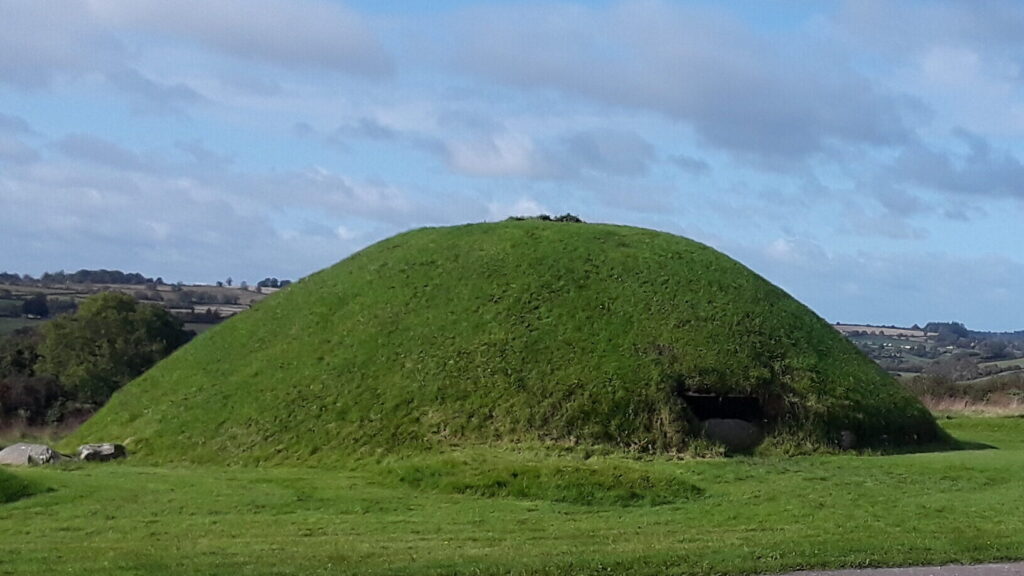
Newgrange and Knowth are the most well-known and visited of the passage tombs. These hollow hills are tidy nests built by stacking stone from a round wall upwards and upwards and then covering it with a capstone and turf to make a hollow hill. Cremated human remains were found in them, but I have a hard time believing their primary purpose was tombs.
Amazingly, mainstream archaelogy rediscovered the winter solstice sunrise illumininating the chamber just 55 years ago, in 1967. At times it feels like we’re still emerging from the dark ages. These ancient sites contain information from 5000-7000 years ago, information that we’re slowly relearning.
The stones used to decorate the outside of the hollow hills are especially wonderful. At Newgrange the rocks have been placed on the hill as part of a reconstruction effort. At Knowth the rocks are lying on the ground outside an inaccessible opening. The rocks are a combination of a jagged white quartzite and well-rounded dark granite balls, about the size of a bowling ball. All the materials used to construct the hills are from distant areas. The people who built these invested significant time and effort gathering the materials.
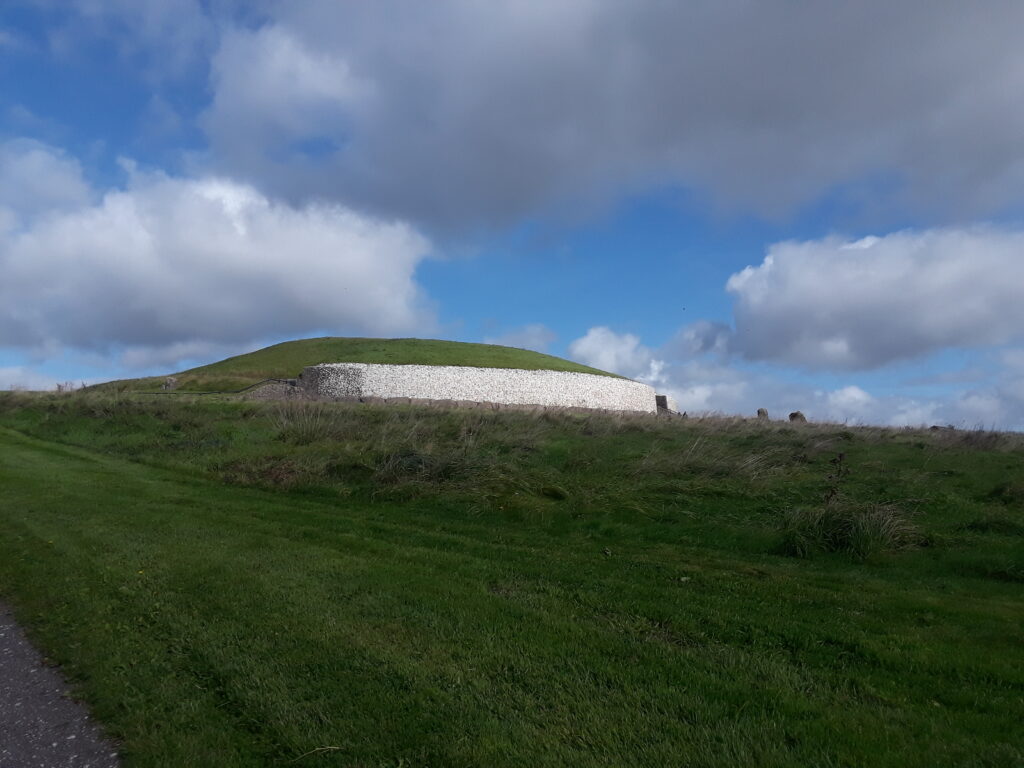
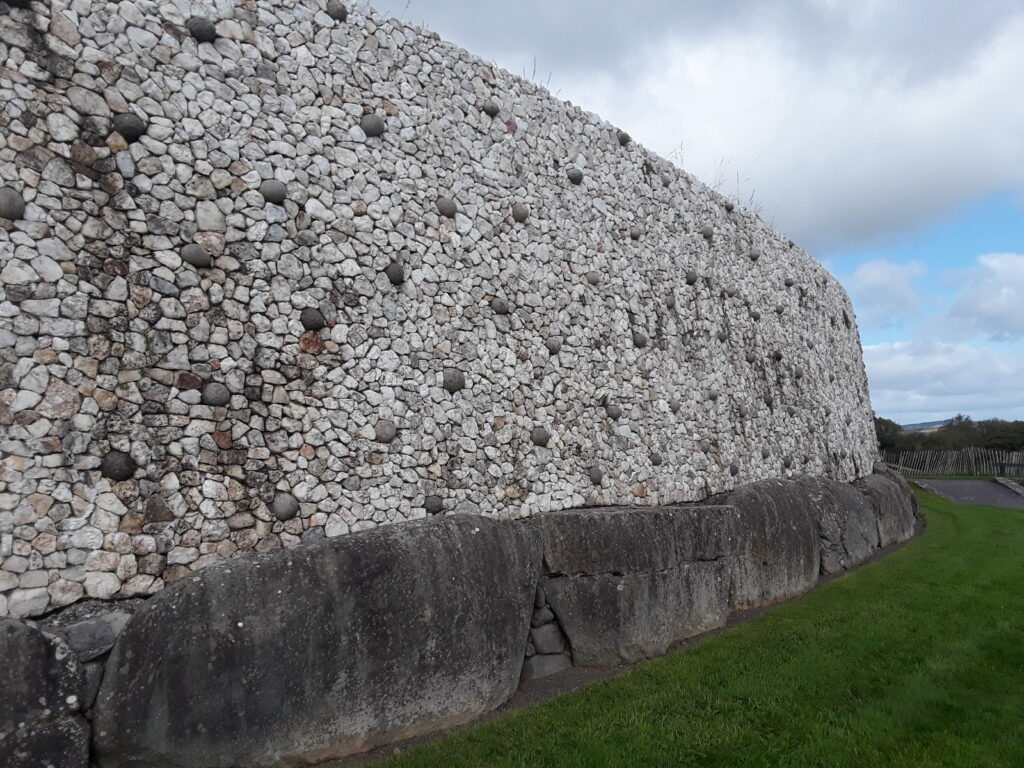
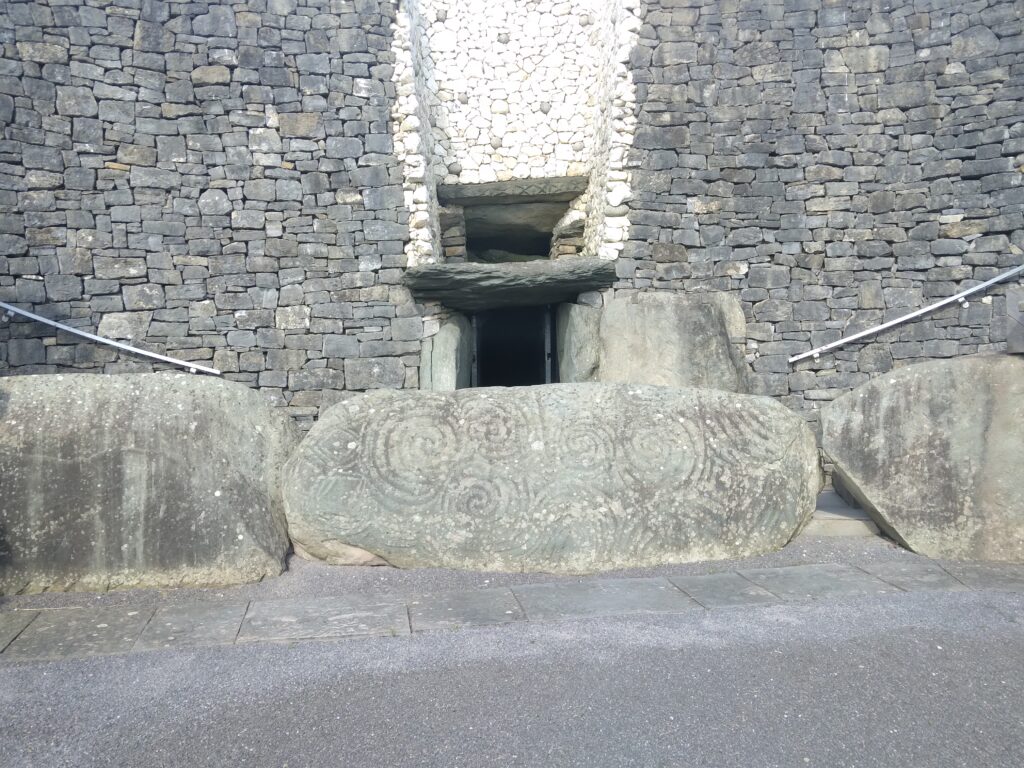
The doorways or windows allow light in only a few days a year, when the sun is at extreme points of east, north, west or south, such as equinoxes and solstice. Here’s my guess based on sitting inside and wondering. When we moved out the caves and started building homes, we needed to take some of the features of caves to the plains. These hollow hills are man-made caves.
The narrow doorways of the man-made caves are important for marking the time and location. When you can capture the angle of the most extreme south or due east from narrow doorways in hollow hills, you know what time of the year it is. These wonderfully constructed places that have stayed dry for thousands of years would be great places to store grain and supplies. The people managing these supplies used the sunlight entering chambers to identify how much was needed and when the days would start getting longer or shorter. When enemies or foul weather threatened, they were used as a refuge. And in myth, people like Merlin and hobbits lived in these hollow hills.
Around the hollow hill at Knowth, each individual kerbstone has a story and lesson. People using stone tools using stone tools on stone carved out the spirals and information over the course of years. It could take years to learn from the patters on each of them. Unfortunately access right now is by shuttle bus from the Brú na Bóinne Visitor Center, so time with each stone is limited.
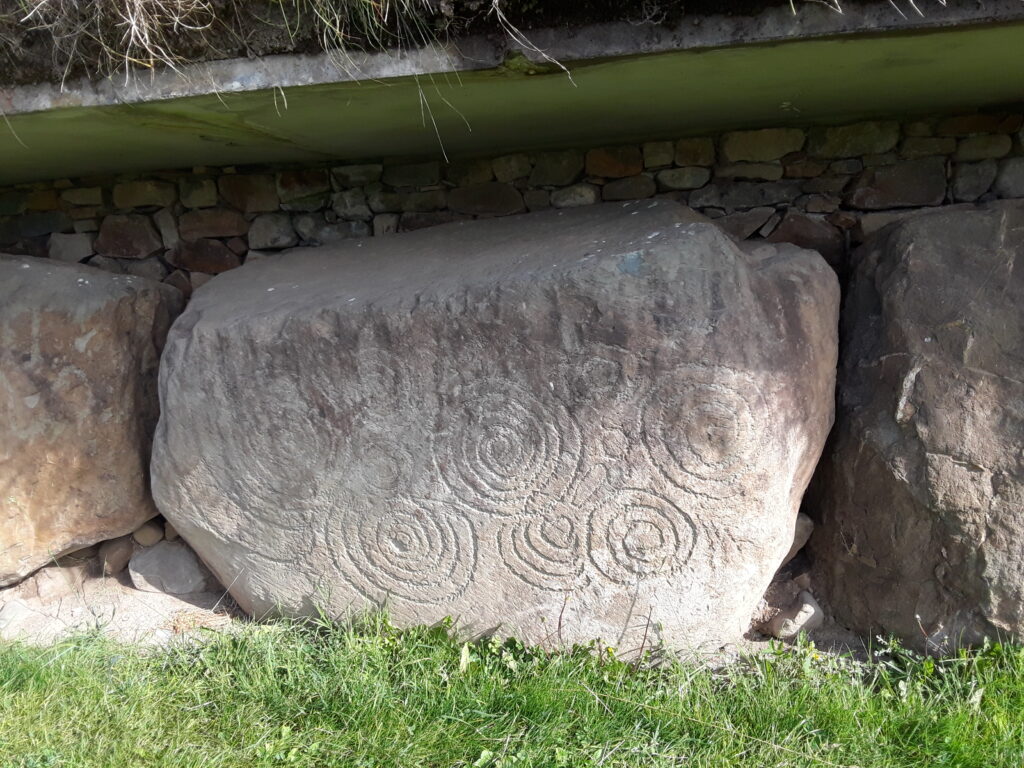
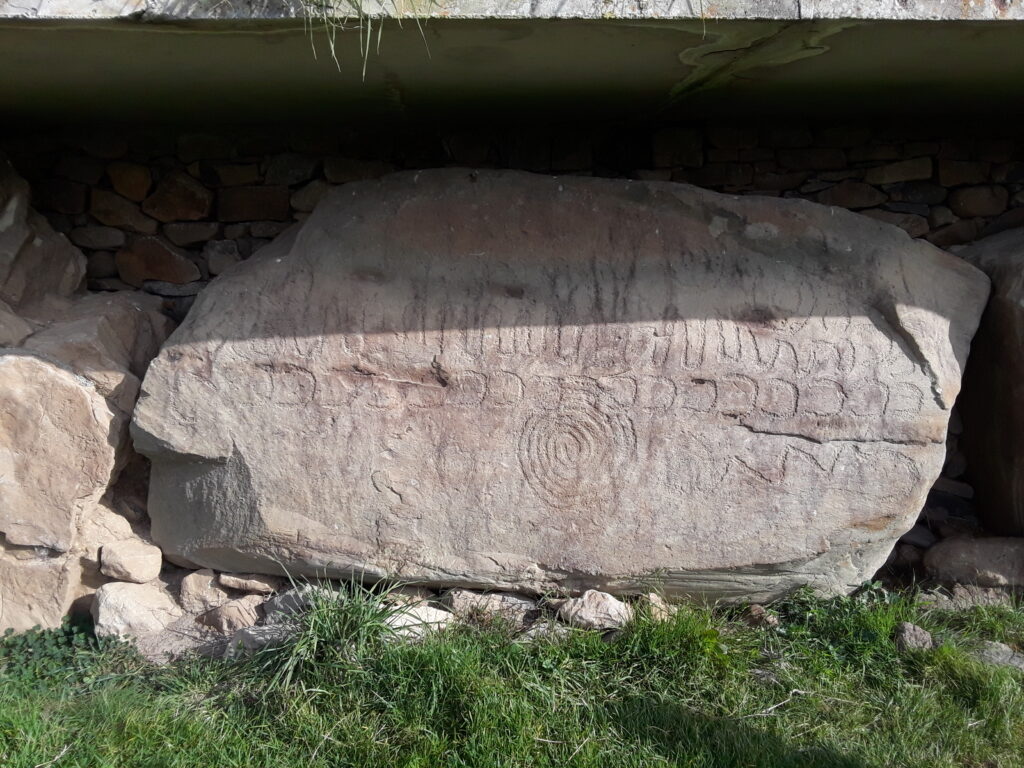
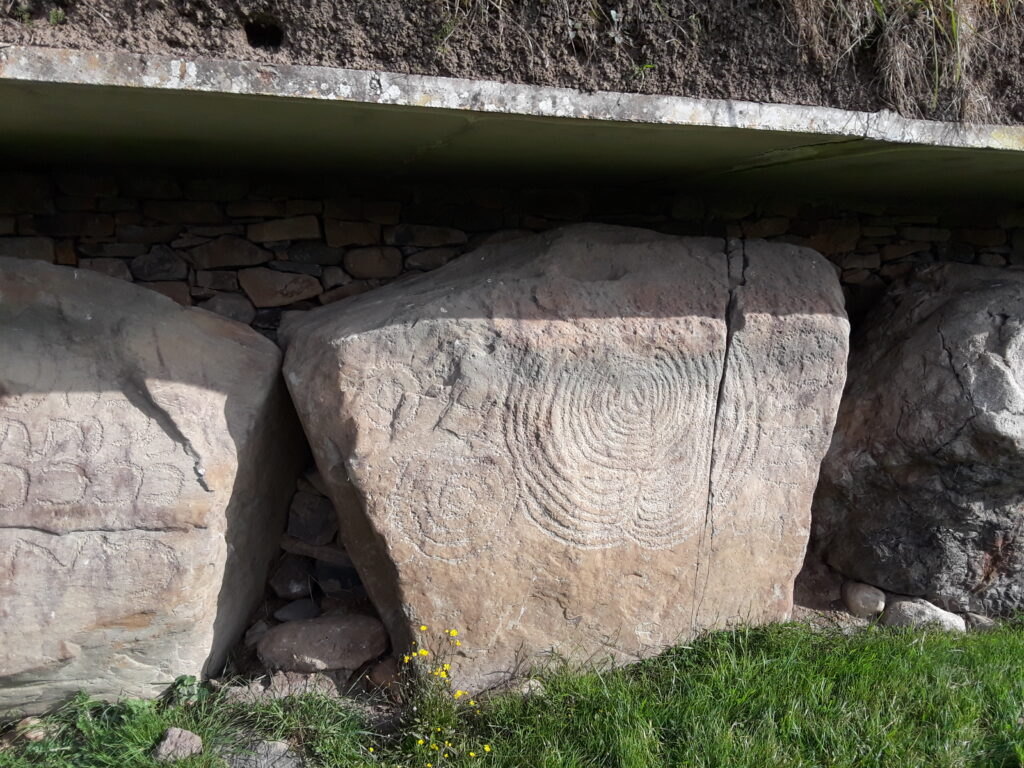
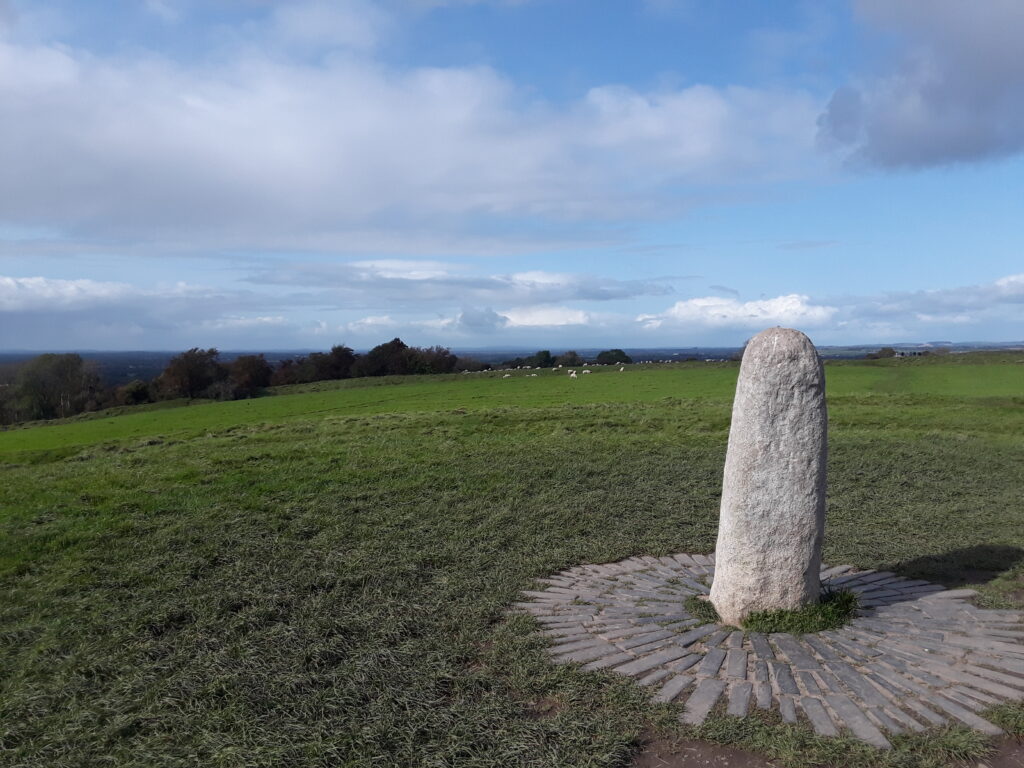
After Brú na Bóinne we visited the Hill of Tara. An amazing place to stand and see vast landscapes laid out from every direction. There are hollow hills with human remains here as well, the Mound of the Hostages. There is so much mystery and history at every turn.
Four Knocks is a brilliant contrast to hundreds of people each day who visit Brú Na Bóinne. You pick up a key at a farmhouse and pull off to the side of the road. Walk a narrow path between two fences to reach the low hill, then unlock the deadbolt on the metal door in the side of a hill.
‘Fuair Cnocs’ is ‘Cold Hills’ in Irish. The zigzags on the interior lintels were striking. One person suspects they are related to the constellation Cassiopeia. There is also possibly a face represented in the rocks.
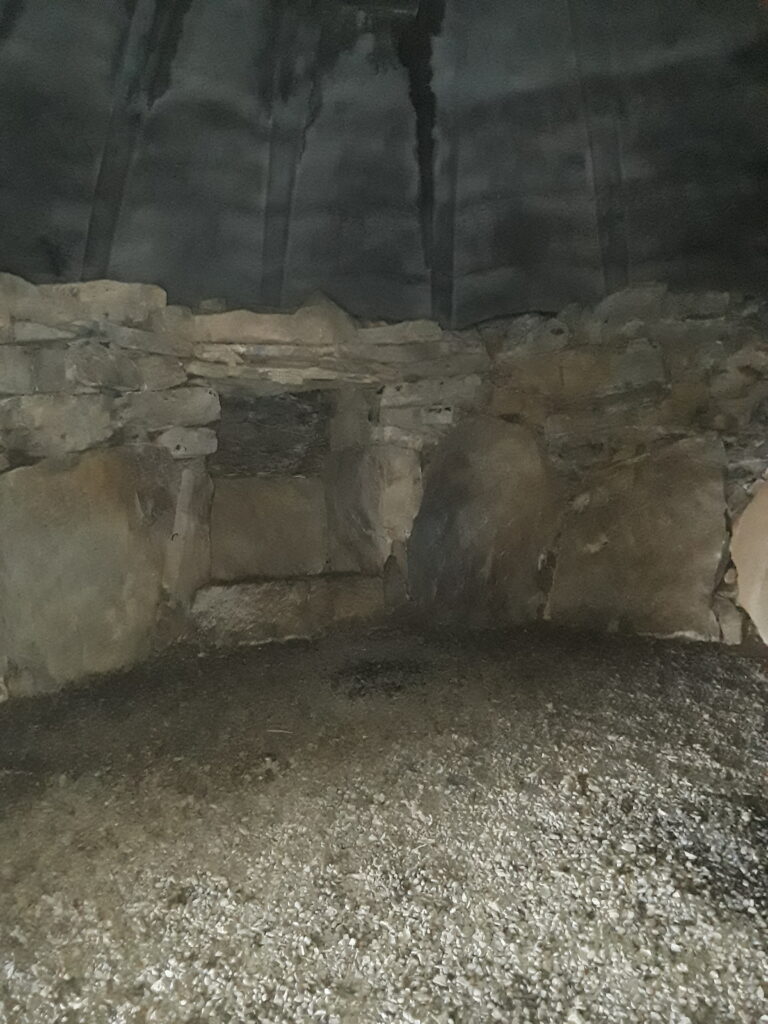
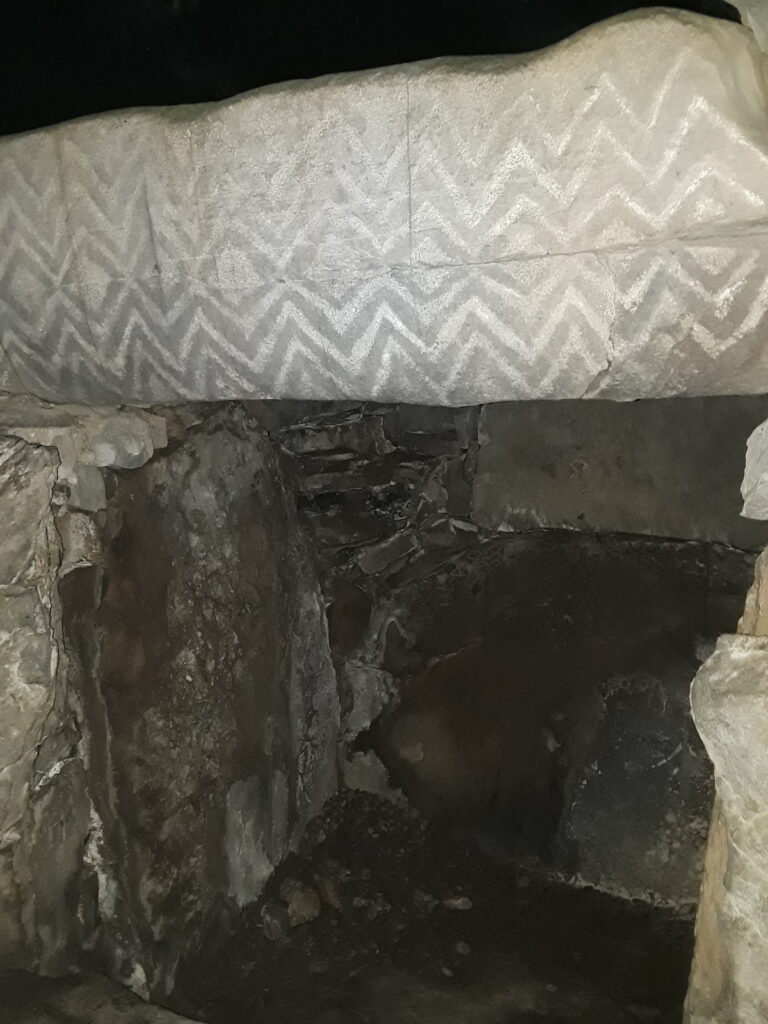
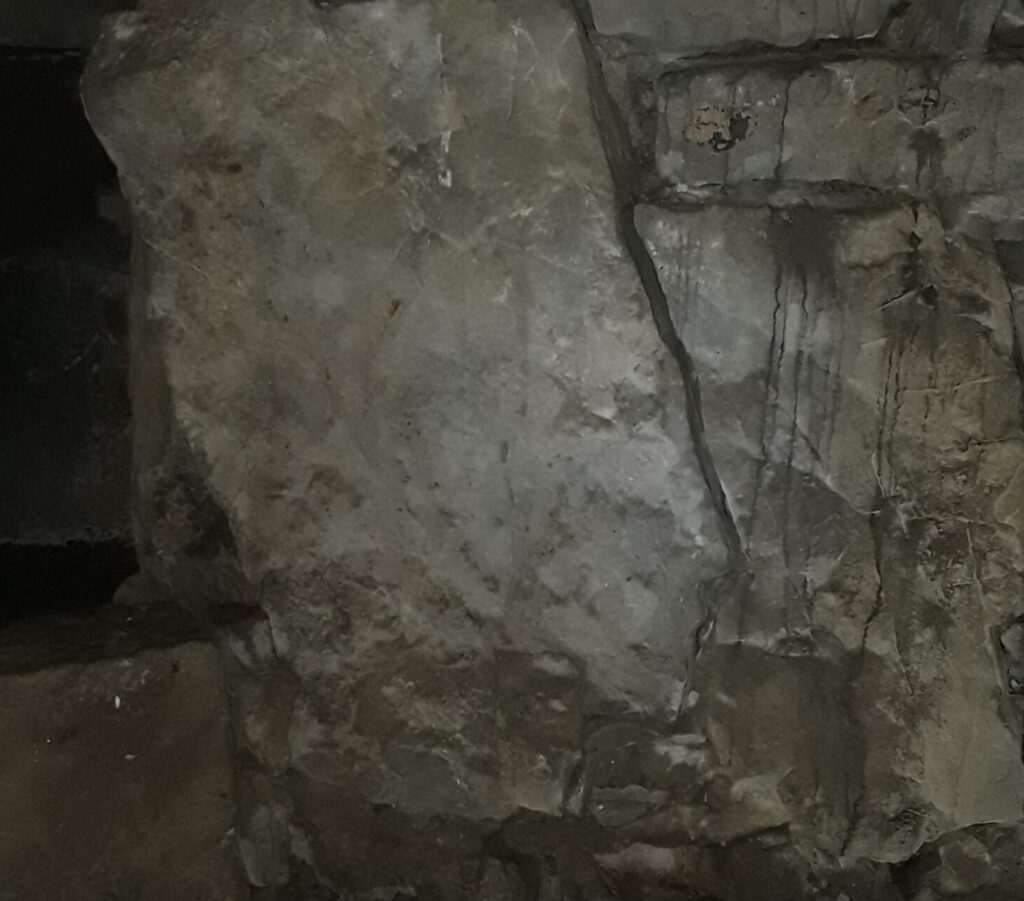
The day I visited it was starting to rain. Local tradition asks you to walk around the hill three times counterclockwise for luck. I found there were long-stemmed cultivated yellow roses dropped at intervals around the hill. When I completed my third circle, the sun came out and the day was bright and cheery again.
All this was just one day!? It was quite the week. Stay tuned for more about the Hill of Uisneach, Galway, and other rememberances of a wonderful trip.
Photos are mine or Denis Fitzpatrick’s, except the two found on Flickr and noted at the photograph. The photos from Flickr are links that you can click to view of more that that photographer’s work and stories.

